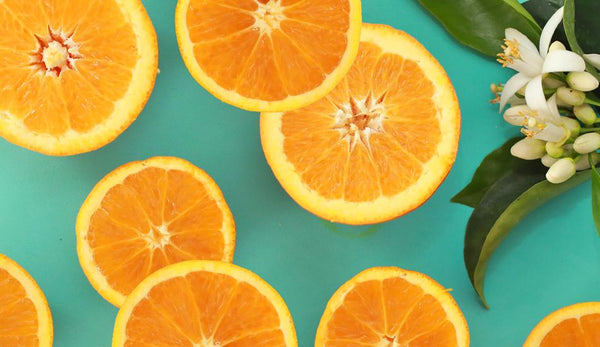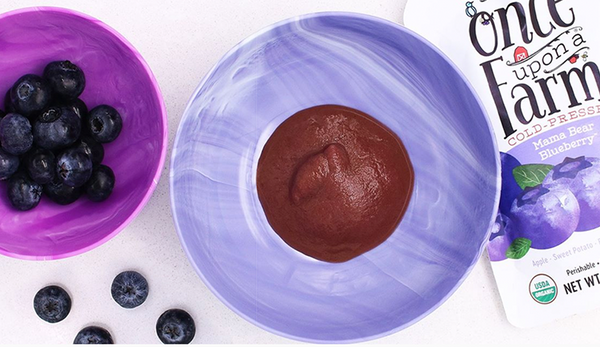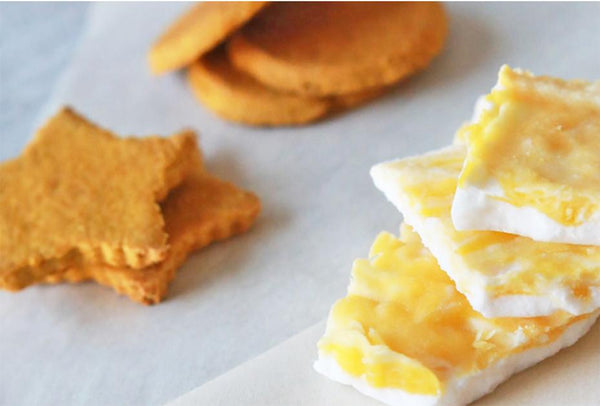Using Purees for Baby-Led Weaning

We’re so excited to partner with Whole Mamas for an intro on the feeding method gaining popularity by the day, baby-led weaning! Whole Mamas is an online roadmap to guide you through motherhood with experts, research, and community to support you throughout your journey. Read on for more info from Whole Mamas’ Chelsea Long!
—
At Whole Mamas, we understand that every family is different and that there’s no one right way to do almost anything! We aim to provide information and support you on your unique journey.
What Is Baby-Led Weaning?
The popularity of baby-led weaning (BLW) has been on the rise, and many mamas are drawn to the idea of feeding their child right off their plate because of all the benefits that come along with it. Baby-led weaning helps fine tune motor development by “supporting the development of eye-hand coordination, chewing skills, dexterity, and healthy eating habits. It also offers babies an opportunity to explore the taste, texture, aroma, and color of a variety of foods.” (1) For more information on the basics of BLW, this podcast explains it well. Pop in some earbuds and continue your multitasking, mama!
How Do You Start Baby-Led Weaning?
If your little one isn’t quite ready for BLW (or you aren’t ready – it can be a bit scary letting go of control and allowing them to work it out on their own during inevitable gagging), purees are the perfect place to start. A huge part of BLW is allowing your little ones to feed themselves as it helps babies learn self-regulation and independence. Try starting with pre-loaded spoons. You load the spoon with a puree and hand it to your baby to let them navigate the spoon to the mouth.
This will be messy, but a major component of BLW is patience so try not to get frustrated when (not if) some of the food ends up in their lap, on the tray, on you or on the wall. To help limit the mess, you can purchase a suction bowl to prevent baby from dumping the entire contents of the bowl. To see the rest of our product picks for baby feeding, click here.
Once your little one is ready for more solid textures, take your purees to the next level with some of our favorite recipes below! And remember, always be sure to pull up a chair for BLW so you can be there immediately if you need to intervene.
Puree-Based Recipes For BLW
-
“Sweet” baby pancakes: Mix egg (make sure you test first for allergic reaction), flour of your choice (or baby cereal) and a fruit puree together to create a pancake batter. Cook in 2 Tbsp. coconut oil and top with ghee or butter.
-
“Savory” baby pancakes: Your baby doesn’t know that pancakes are “supposed to be” sweet, so try the same recipe using a veggie puree and offer a mayo or other dressing or puree for dipping.
-
If you have a food dehydrator, you can use that to make your own fruit and veggie roll ups!
-
Mix a veggie puree in scrambled eggs (your older child may appreciate green eggs and ham!) or mix with tomato sauce and serve with noodles of choice.
-
In smoothies: See our recommendations for how to make a nutrient-dense smoothie that still tastes yummy. Don’t forget you can use frozen leftover baby blends for your own smoothies too!
-
Make popsicles with fruit purees or freeze some in a longer ice cube tray and use them as teethers.
-
Use fruit purees as a spread on bread or cracker of your choice, combined with coconut cream.
What To Look For in Purees
When you’re just starting, search for single ingredient purees like Once Upon a Farm’s Stage 1 blends made of organic, cold-pressed fruits and veggies. Most pediatricians recommend introducing new foods one at a time and waiting a few days between new foods to ensure there’s no allergic reaction. If you’re afraid of wasting food since baby eats such a small amount at each feeding, you can freeze the leftovers in small ice cube trays and thaw them later for baby (or add them to a smoothie for yourself!).
You may be wondering what’s the best food to introduce to baby first. Find our recommendations and explanations here, but essentially, babies tend to need iron and zinc. Foods like meat, poultry, and fish are great choices but can be difficult first foods so if your little one isn’t interested in meat, make sure to include foods rich in vitamin C with your plant-based source of iron to boost iron absorption. For example, pair a source of non-heme iron such as cooked, dark leafy greens, legumes, or fortified bread/grains with a side of sweet potato, mango, or cooked broccoli. If you can, add a source of good fat as well (think avocado, coconut milk, hemp seed, etc).
Research suggests early exposure to common allergens is beneficial for preventing allergies. For grains, look for cereals with no added sugar or flavors. You can mix a grain with a fruit and or veggie puree (oatmeal with banana and zucchini, for example); which is great if you have a puree that’s more watery! If you want to introduce dairy, look for full-fat plain yogurt or nut milk-based yogurt. You can mix purees into the yogurt to sweeten and flavor it.
Starting your baby on solids can seem like a daunting task, but you can see that there are many ways to go about it. How about you? Did you lean toward purees, BLW, or a combination? Join the conversation with us on Facebook or Instagram or comment below!
Whole Mamas is an online roadmap and supportive community for all stages of motherhood. Through interactive programs, articles, podcasts and social media content, we provide tools that help mamas and their families thrive. Find out more at wholemamasclub.com or connect with us on Instagram @wholemamasclub.
Sources
Read More

Immune Boosting Foods
As many of us are spending more time at home...

Using Purees for Baby-Led Weaning
We’re so excited to partner with Whole Mamas for an...

Homemade Teething Biscuits & Frozen Yogurt Bites
Teething Biscuits Ingredients 2 cups of thick rolled oats 1...
